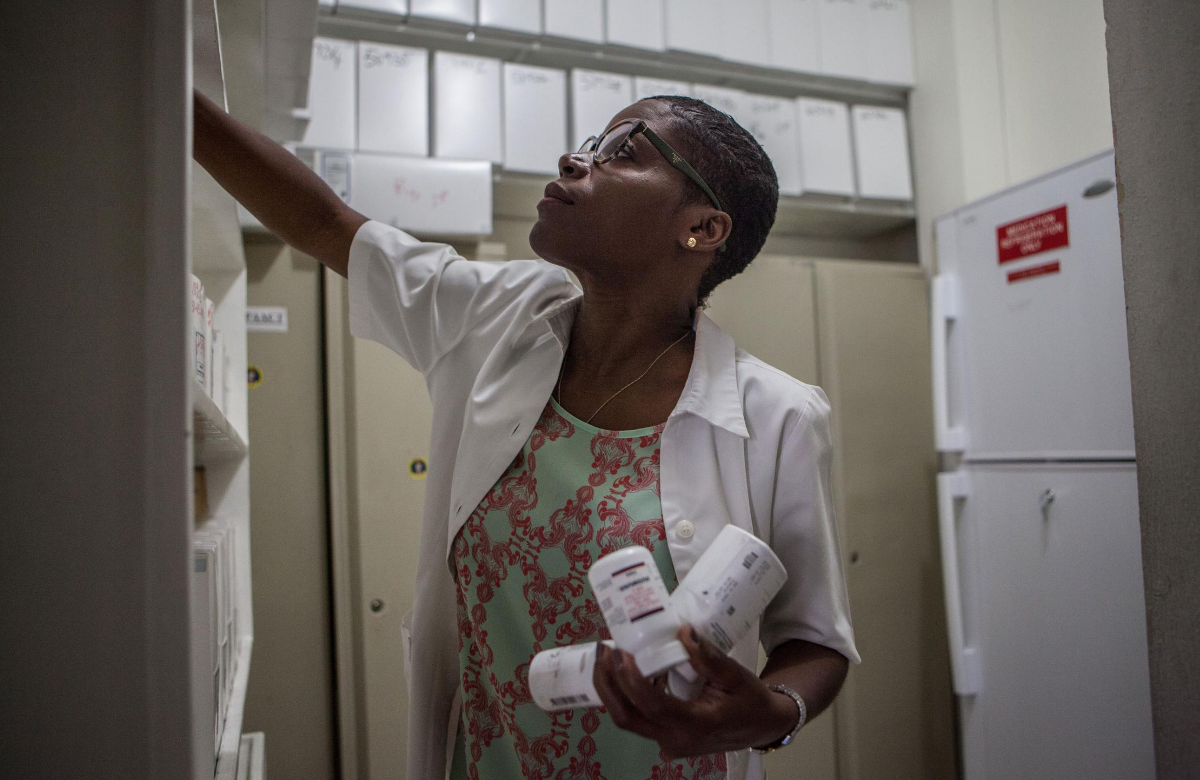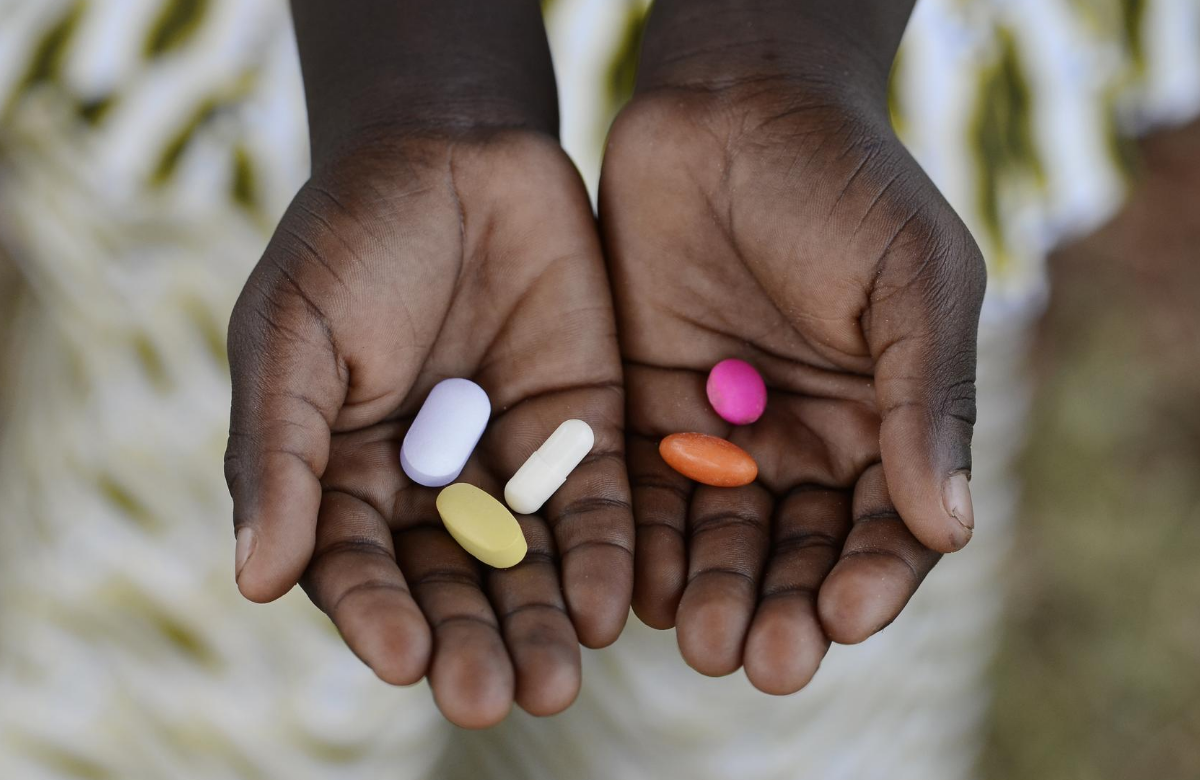News from aidsmap

The vaginal ring against HIV: regulatory approval for a new prevention choice for women
The European Medicines Agency (EMA) has announced a “positive benefit-risk opinion” on the use of the vaginal ring containing the anti-HIV medication dapivirine. The ring is the first HIV prevention option specifically designed for women since the female condom was approved nearly 30 years ago.
Gay men in Montreal using a variety of HIV prevention strategies, but little evidence of a "combination" approach to prevention being adopted
Gay and other men who have sex with men in Montreal are using a wide range of HIV prevention strategies, Canadian investigators report in AIDS and Behavior. Condoms were the main prevention method employed by HIV-negative men and the use of PrEP was low. The principal prevention strategy used by men with HIV was antiretroviral treatment and an undetectable viral load, or undetectable = untransmittable (U=U).
In the US 58% of trans men and 35% of trans women are familiar with PrEP
Dr Jae Sevelius of the University of California, San Francisco, led a survey of trans people in the US which showed a relative lack of awareness of PrEP by trans people. Interestingly, trans men were more aware of PrEP than trans women were.
Doravirine injections were safe and long-lasting, but did not reach therapeutic levels
A study that was conducted in 2016 but which has only recently been published documents an unsuccessful attempt to produce an injectable formulation of an HIV drug, and reminds us both that not all drugs are suitable for this form of administration, and more generally that scientific results may thwart strategic drug development plans. The phase I drug level and safety study found that an injectable version of MSD's non-nucleoside reverse transcriptase inhibitor (NNRTI) doravirine was safe and long-lasting, but did not reach therapeutic levels in the body.

Antiretroviral therapy at time of conception associated with some adverse birth outcomes
Conceiving while taking antiretroviral therapy increases the risk of having a baby with a low birth weight and adverse pregnancy outcomes including miscarriage, stillbirth and neonatal death, an international team of investigators reports in Clinical Infectious Diseases. Taking HIV therapy at the time of conception was associated with a more than twofold increase in the odds of delivery of a baby with low birth weight and a 40% increase in other adverse pregnancy outcomes.
Top 10 articles on HIV prevention from AIDS 2020
The 23rd International AIDS conference, also known as AIDS 2020, was held virtually in July 2020 due to the coronavirus, and presented some interesting news in HIV prevention. In case you were not able to access the conference, these ten articles detail some important updates.
Top 5 HIV cure and vaccine stories from AIDS 2020
AIDS 2020 presented the latest research towards the development of an HIV cure and vaccine. Find out more about this research in our blog.
Top 5 stories on COVID-19 and HIV from AIDS 2020
The COVID-19 pandemic has changed many things about the way we live our lives. Researchers all over the world have been trying to find reliable information about this new virus. This was reflected in this year’s AIDS 2020 conference. Many pieces of work were presented to answer some of the questions raised by coronavirus and its impact on people living with HIV. The following five articles highlight some of the key discoveries.

Top 5 HIV treatment stories at AIDS 2020
You might have missed some of the key developments in HIV treatment presented at the recent AIDS 2020 conference. Read about them here.
Cardiovascular risk prediction tools aren't accurate in people with HIV
The Framingham risk score and other assessments used to evaluate an individual’s risk of cardiovascular disease perform poorly in people living with HIV, according to US research presented to AIDS 2020. The investigators tested the performance of three separate diagnostic tools developed for use in the general population and found that all under-estimated the risk of cardiovascular disease in people living with HIV.
Community-run PrEP programme for Vietnamese trans women sees hundredfold rise in users in three years
A PrEP programme in Vietnam set up for transgender women, and run largely by them, has seen the number of women enrolled in the programme increase from three in the second quarter of 2017 to 409 in the second quarter of 2020.
Overdose deaths have reduced survival gains among people with HIV in British Columbia
Survival gains resulting from effective antiretroviral therapy are threatened by drug overdose deaths among people living with HIV, researchers reported at AIDS 2020. A related study found that HIV-positive people who use drugs are also at greater risk of death due to acute infections.

96 weeks results from two African studies confirm dolutegravir non-inferiority but highlight continued weight gain
At AIDS 2020, 96-week data from two major studies conducted in South Africa and Cameroon confirmed that dolutegravir is an important therapeutic option for people living with HIV in sub-Saharan Africa and other resource-limited settings. However, both studies highlighted the drug’s impact on weight gain.
Starting infant treatment within days of birth does not improve viral suppression
Very early HIV treatment resulted in long-term viral suppression in barely one-third of South African infants started on treatment within days of birth, according to a study published in EClinical Medicine. Infants diagnosed and started on treatment ten days after birth did better than infants who started treatment a day after birth, the study found.
A walk-in clinic with social care improves HIV outcomes for patients with complex social needs
The Max Clinic in Seattle in Washington State, USA, addresses risks of patients’ non-attendance by amending clinic arrangements to fit the patient. Researchers who interviewed patients at this clinic found high levels of patient satisfaction and improvements in patients’ viral loads, according to a study in the June issue of AIDS Patient Care and STDs. These improvements were achieved by meeting patients’ social needs as well as their clinical needs.
‘If you only have to take a pill once a day to protect yourself…it’s a miracle’: experiences of PrEP for women who inject drugs in the US
Among a group of women who inject drugs in Philadelphia, many saw pre-exposure prophylaxis (PrEP) as a beneficial way of preventing HIV infection, resulting in a decision to accept free PrEP. Women who believe that PrEP is beneficial see HIV as a severe threat to themselves personally. However, for a small number of women in the study, barriers such as HIV-related stigma, fear of side effects and worry regarding continued PrEP access outweigh perceived benefits and result in a decision to decline free PrEP.
New personal finance pages

We’ve recently published eight new pages on personal finance for people living with HIV. These include pages on different types of insurance (health, life, accident and critical illness), and information on mortgages and income protection.
Editors' picks from other sources
It's time to stop comparing COVID-19 to HIV | Xtra Magazine
The two crises have affected marginalised populations at their worst. But suggestions of solidarity ignore the longstanding shame and stigma LGBTQ2 people with HIV/AIDS face.
What are the new HIV treatment and prevention drugs under development in 2020? | TheBodyPro
Richard Jefferys of Treatment Action Group discusses the pipeline for new modalities being explored for treatment, PrEP, vaccine, and cure.
Why do so many women find it challenging to stay in postpartum HIV care? | BMC blog
Many women who attend HIV care during pregnancy do not continue after giving birth. This has led to challenges in decreasing the rate of mother-to-child transmission in countries where it is high, such as Ghana.
An advocates' primer on long-acting injectable cabotegravir for PrEP | AVAC
In May and July 2020, the world learned new data from HPTN 083, a study of long-acting injectable cabotegravir (CAB-LA) for HIV prevention. This report summarises the findings, unanswered questions and next steps for the development and introduction of CAB-LA.
New data: Treat 95% of people living with HIV for just four weeks of global HIV drug sales | ITPC
The Make Medicines Affordable campaign is calling for a widespread switch from patented to generic HIV drugs so that at least 95% of those living with HIV globally would be able to receive treatment.
How to lose weight if you have HIV

As for anyone, it’s important for people with HIV to maintain a healthy body weight. Whether you have gained weight due to an imbalance of food and exercise, or having started HIV treatment, the steps to weight loss are the same.
We’ve published a new page on how to lose weight if you have HIV which includes basic steps towards weight loss, and information on weight gain in pregnancy and medicine to help you lose weight.
